Whitish and greenish wildflowers
Many of these flowers have little in common beyond the colour of their petals: whitish or greenish-white. But, even grouping flowers by petal colour presents problems: some species come in various shades. I have usually seen the twin flower looking white, but it can be pink. Yarrow is almost always white, but there is a picture below of purple yarrow. Then there are the closely related species which differ in colour, such as the two local lady’s slippers, and the spiraea.
 Albeit not all that common around here, these mountain lady’s slippers (Cypripedium montanum Dougl. ex Lindl.) were seen near the lakeshore. They were adjacent to some yellow lady’s slippers, which can be seen on the yellowish wildflower page. Lady’s slippers are orchids (subfamily Cypripedioidea). Their slipper-shaped pouches trap insects, which then fertilize the flower as they climb out.
Albeit not all that common around here, these mountain lady’s slippers (Cypripedium montanum Dougl. ex Lindl.) were seen near the lakeshore. They were adjacent to some yellow lady’s slippers, which can be seen on the yellowish wildflower page. Lady’s slippers are orchids (subfamily Cypripedioidea). Their slipper-shaped pouches trap insects, which then fertilize the flower as they climb out.
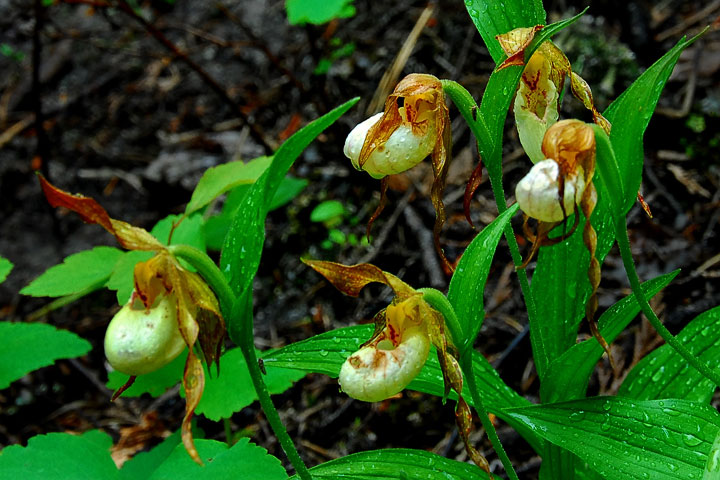 A group of mountain lady’s slippers along the shore.
A group of mountain lady’s slippers along the shore.
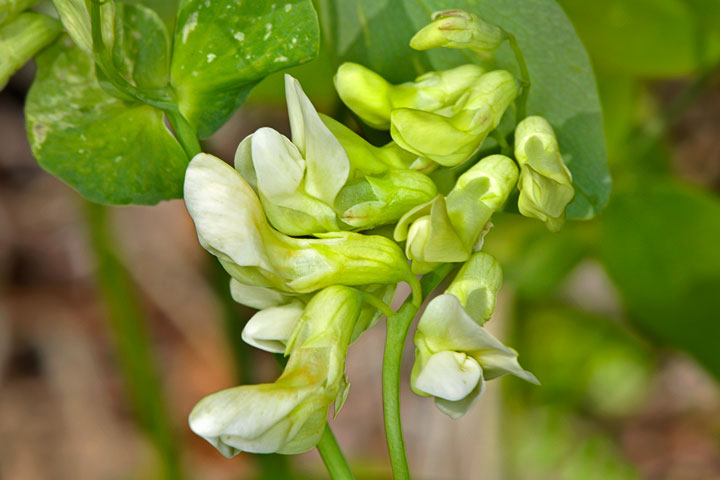 A creamy pea vine within a few meters of the lakeshore.
A creamy pea vine within a few meters of the lakeshore.
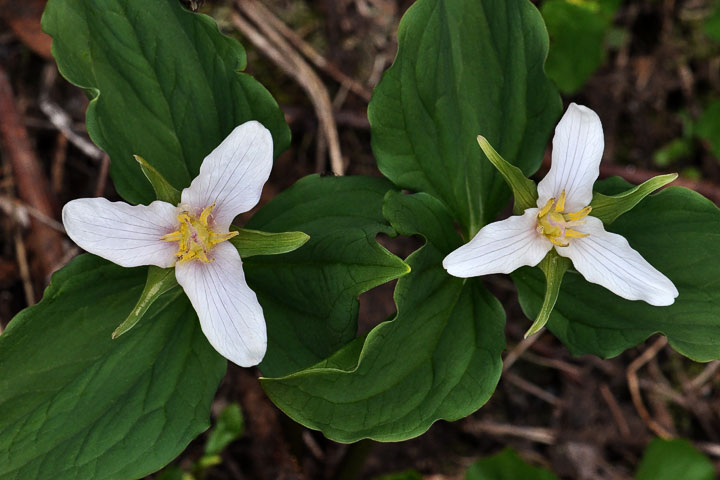 Everything about the western trillium (Trillium ovatum) is in threes. There are three leaves, petals, sepals, and six stamens. The flowers appear in spring and early summer as the snows melt, so the altitude at which they appear shifts. This was taken in early June at an elevation of about 1400 meters.
Everything about the western trillium (Trillium ovatum) is in threes. There are three leaves, petals, sepals, and six stamens. The flowers appear in spring and early summer as the snows melt, so the altitude at which they appear shifts. This was taken in early June at an elevation of about 1400 meters.
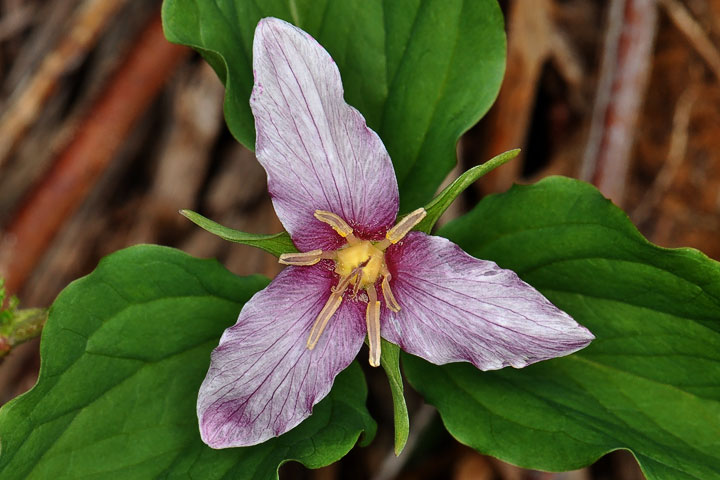 The western trillium starts out white, but shifts to a pink or purple as it ages.
The western trillium starts out white, but shifts to a pink or purple as it ages.
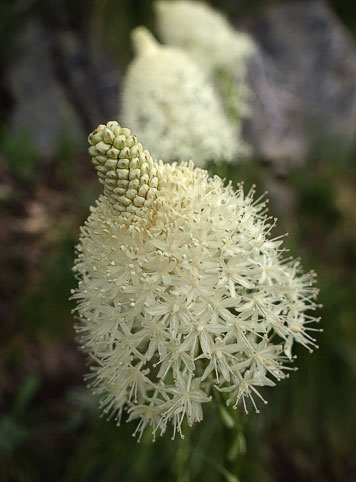 This beargrass (Xerophyllum tenax) was seen at an altititude of about 1800 meters. The top of the stock is covered with a raceme of hundreds of flowers, the blooming of which starts at the base and proceeds upwards. The flowers here have not finished blooming.
This beargrass (Xerophyllum tenax) was seen at an altititude of about 1800 meters. The top of the stock is covered with a raceme of hundreds of flowers, the blooming of which starts at the base and proceeds upwards. The flowers here have not finished blooming.  Doug Thorburn.
Doug Thorburn.
 Yarrow (Achillea millefolium) might be found almost anywhere. Normally, it is white, but now and then other colours are seen—as below.
Yarrow (Achillea millefolium) might be found almost anywhere. Normally, it is white, but now and then other colours are seen—as below.
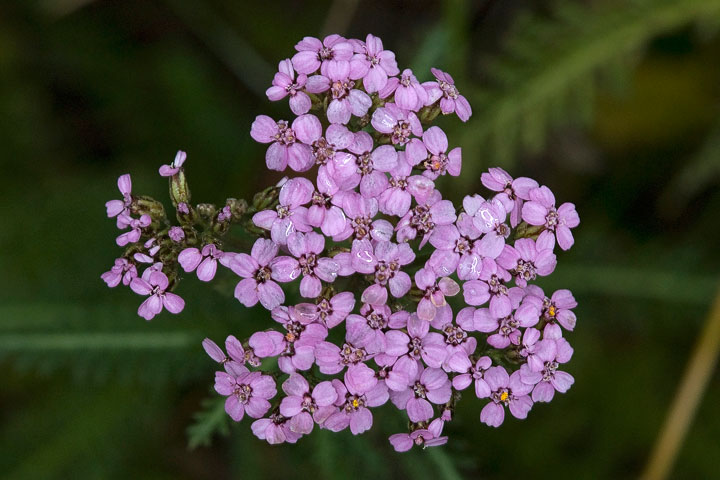 Purple yarrow is an uncommon variant on the normal white.
Purple yarrow is an uncommon variant on the normal white.
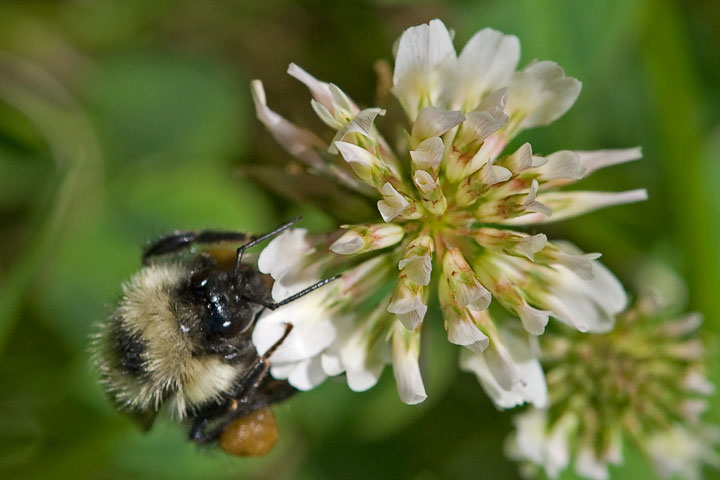 A bumblebee (Bombus vagans) visits some white clover (Trifolium repens).
A bumblebee (Bombus vagans) visits some white clover (Trifolium repens).
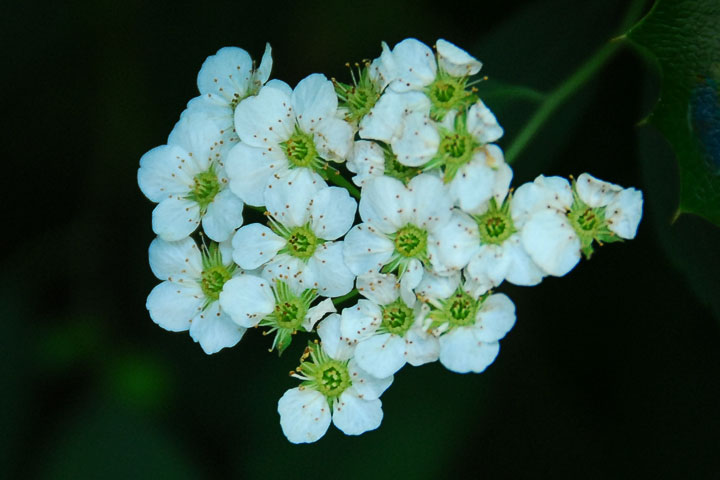 This birch–leaved spirea (Spiraea betulifolia) was seen along the lakeshore.
This birch–leaved spirea (Spiraea betulifolia) was seen along the lakeshore.
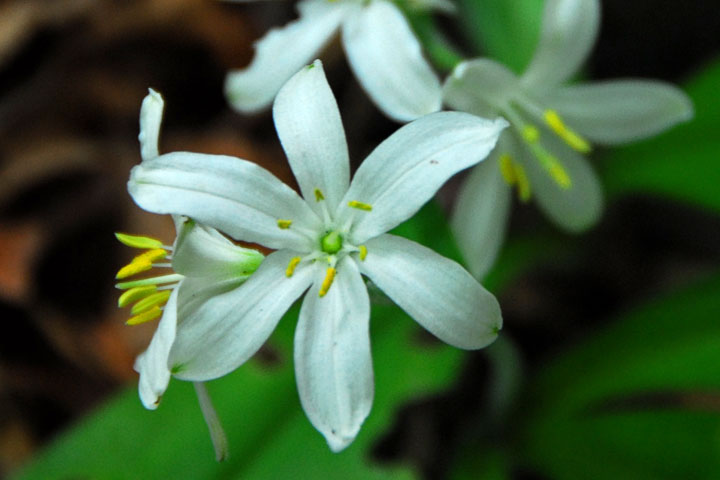 The Queen’s cup or bead lily (Clintonia uniflora) has six petals. Each flower will be followed by a single amethyst–blue berry.
The Queen’s cup or bead lily (Clintonia uniflora) has six petals. Each flower will be followed by a single amethyst–blue berry.
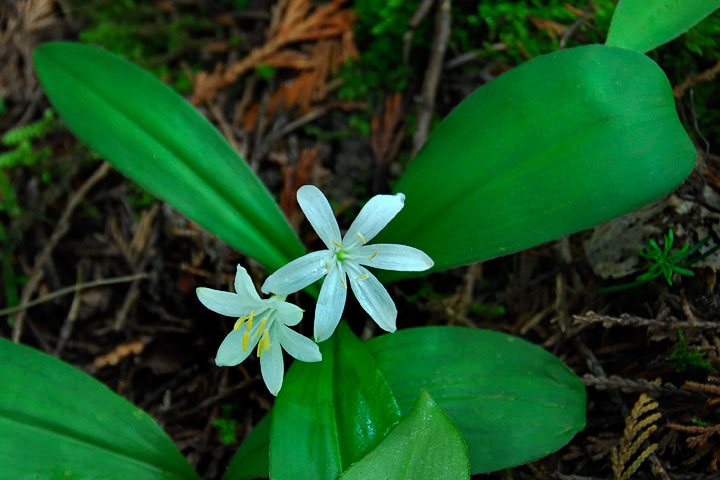 The Queen’s cup or bead lily covers the forest floor in the spring. These perennials have two to three oblong, glossy-green leaves.
The Queen’s cup or bead lily covers the forest floor in the spring. These perennials have two to three oblong, glossy-green leaves.
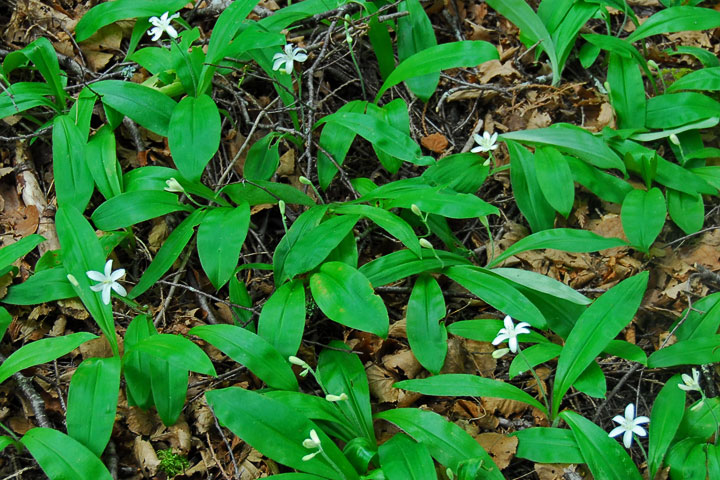 The Queen’s cup or bead lily covers the forest floor in the spring. These perennials have two to three oblong, glossy-green leaves.
The Queen’s cup or bead lily covers the forest floor in the spring. These perennials have two to three oblong, glossy-green leaves.
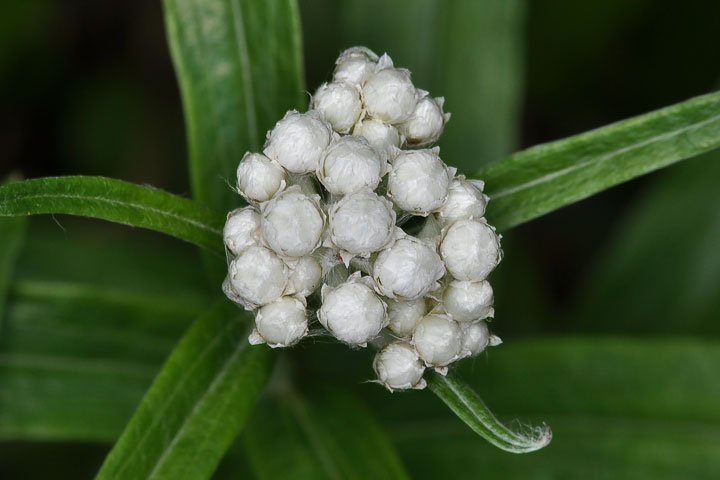 The pearly everlasting (Anapahlis margaritacea) at Gibson Lake. The plant gains its name, everlasting, from the ease with which the flower can be dried for winter bouquets.
The pearly everlasting (Anapahlis margaritacea) at Gibson Lake. The plant gains its name, everlasting, from the ease with which the flower can be dried for winter bouquets.
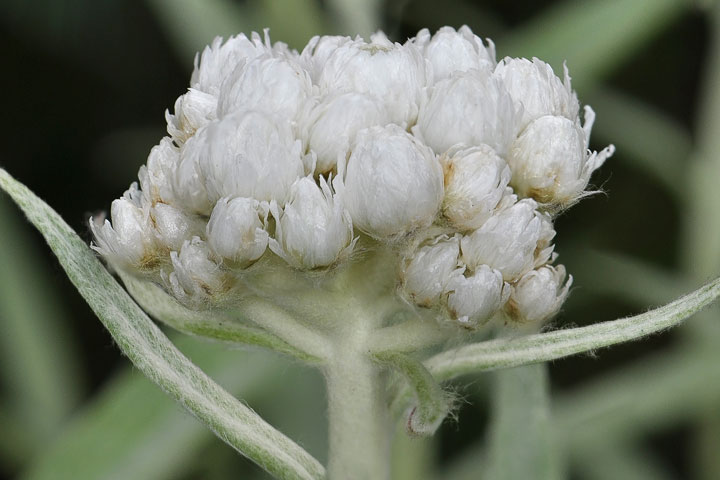 A side view of the pearly everlasting.
A side view of the pearly everlasting.
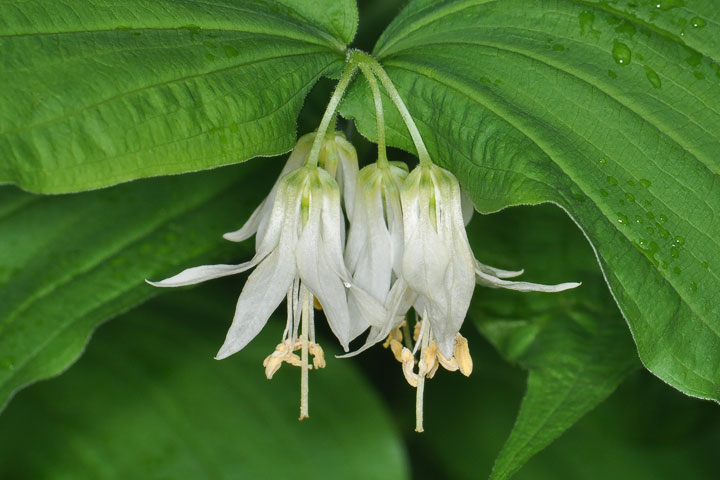 Hooker’s fairybells (Disporum hookeri) usually appears as bell–shaped white flowers hanging between lance–shaped leaves.
Hooker’s fairybells (Disporum hookeri) usually appears as bell–shaped white flowers hanging between lance–shaped leaves.
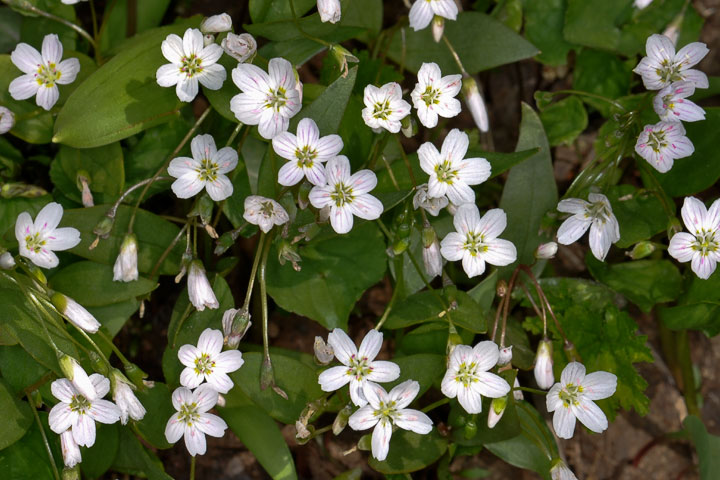 As its name implies, the spring beauty (Claytonia lanceolata) is quick to populate the moist ground left by receding snows.
As its name implies, the spring beauty (Claytonia lanceolata) is quick to populate the moist ground left by receding snows.
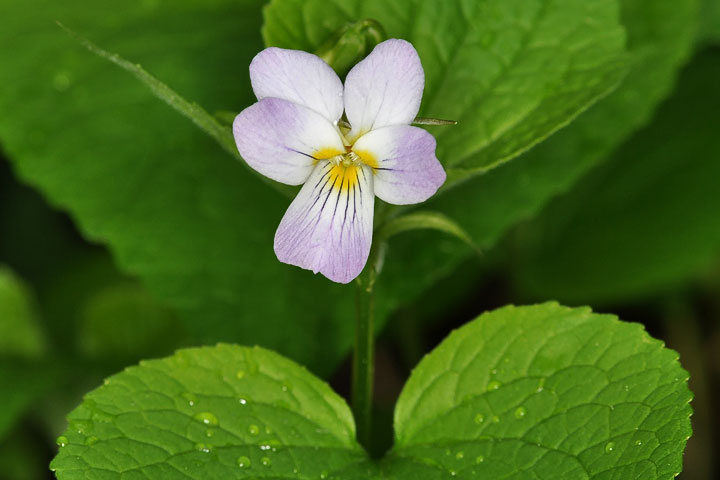 I have seen three wild violets around the Lake. This is the Canada violet (Viola canadensis); it is mainly white, but shows a yellow throat. The white violet (adjacent picture) lacks the yellow. There is also a completely yellow one called the stream violet. All display purple lines on the lowest petal.
I have seen three wild violets around the Lake. This is the Canada violet (Viola canadensis); it is mainly white, but shows a yellow throat. The white violet (adjacent picture) lacks the yellow. There is also a completely yellow one called the stream violet. All display purple lines on the lowest petal.
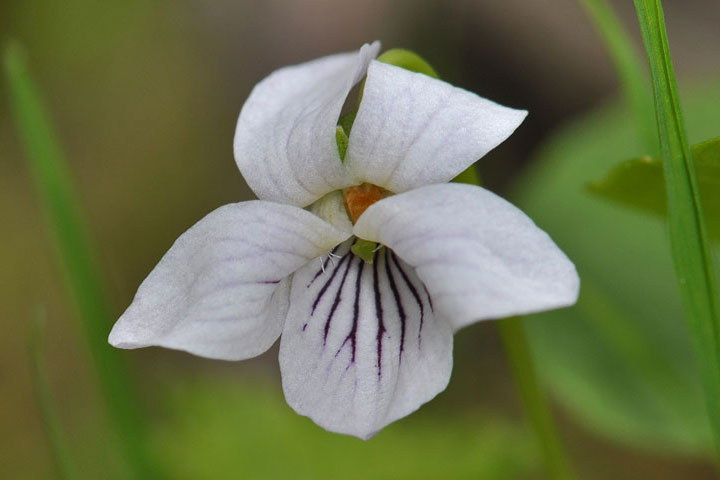 The white violet (Viola renifolia) is the least common of the local wild violets. This one was seen at Gibson’s Lake.
The white violet (Viola renifolia) is the least common of the local wild violets. This one was seen at Gibson’s Lake.
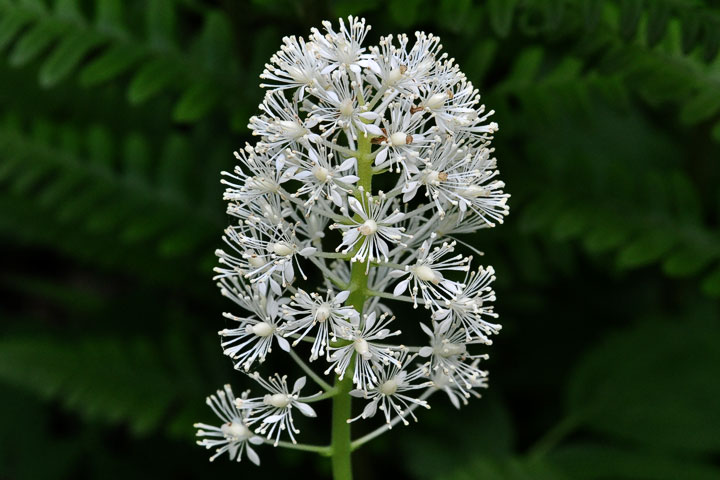 The baneberry (Actaea rubra) gains its name from the Anglo–Saxon word, bana, which means murderous—all parts of this plant are extremely poisonous.
The baneberry (Actaea rubra) gains its name from the Anglo–Saxon word, bana, which means murderous—all parts of this plant are extremely poisonous.
 This may be a bittercress (Cardamine oligosperma). Does anyone know?
This may be a bittercress (Cardamine oligosperma). Does anyone know?
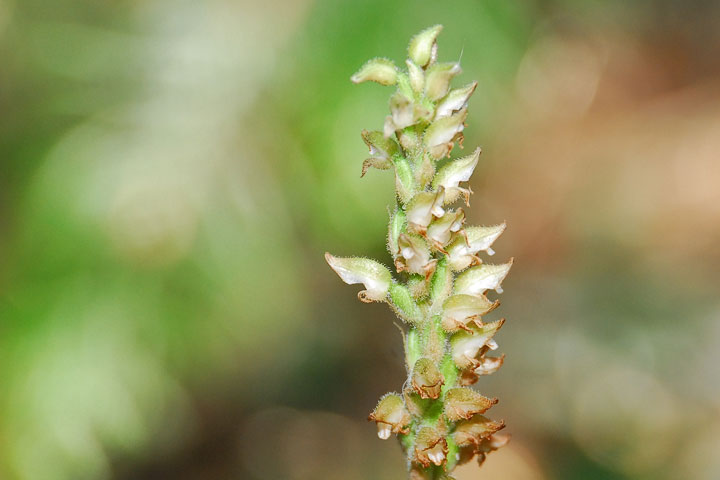 Rattlesnake plantain (Goodyera pubescens) at Kokanee Creek Park. The stalk is covered with lovely, but small flowers. The plant’s common name is curious. It seems that the pattern of the leaves was thought to resemble the skin of a snake. From this, there arose the dubious belief that the plant would serve as a cure for snakebite. But, North American snakebites are rarely fatal, so almost any action will soon seem to have provided relief—rather like kissing a small child’s hurt better.
Rattlesnake plantain (Goodyera pubescens) at Kokanee Creek Park. The stalk is covered with lovely, but small flowers. The plant’s common name is curious. It seems that the pattern of the leaves was thought to resemble the skin of a snake. From this, there arose the dubious belief that the plant would serve as a cure for snakebite. But, North American snakebites are rarely fatal, so almost any action will soon seem to have provided relief—rather like kissing a small child’s hurt better.
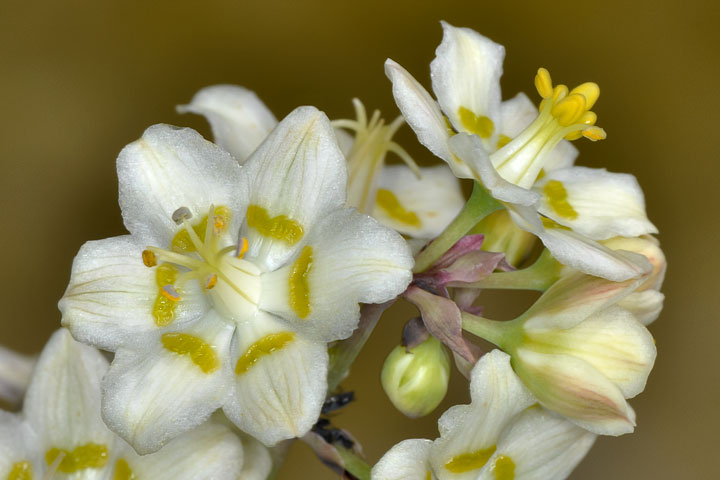 This mountain death camas (Zigadenus elegans) was seen in Pilot Bay Park. As its name suggests, this plant is toxic.
This mountain death camas (Zigadenus elegans) was seen in Pilot Bay Park. As its name suggests, this plant is toxic.
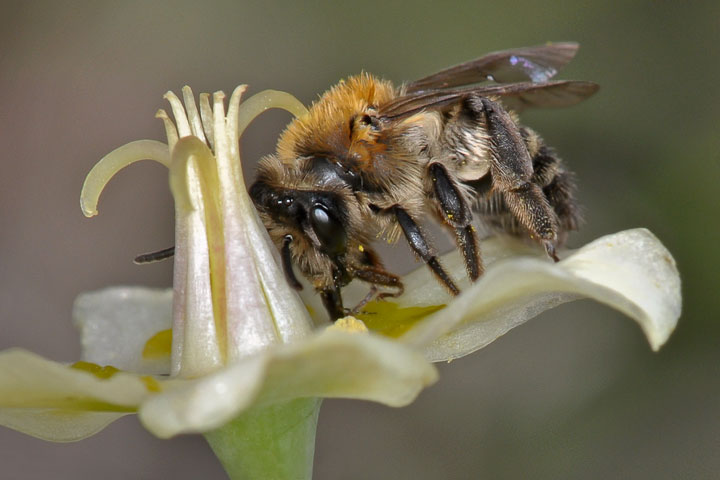 The death camas is poisonous to people, but apparently the nectar isn’t poisonous to this bee.
The death camas is poisonous to people, but apparently the nectar isn’t poisonous to this bee.
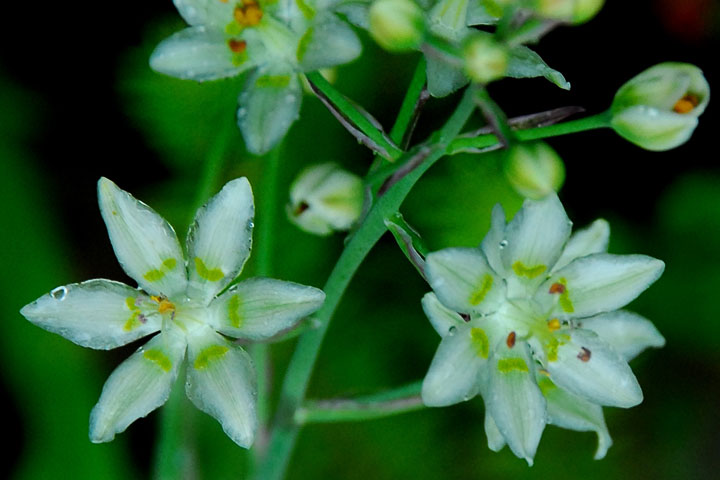 Another patch of mountain death camas (Zigadenus elegans).
Another patch of mountain death camas (Zigadenus elegans).
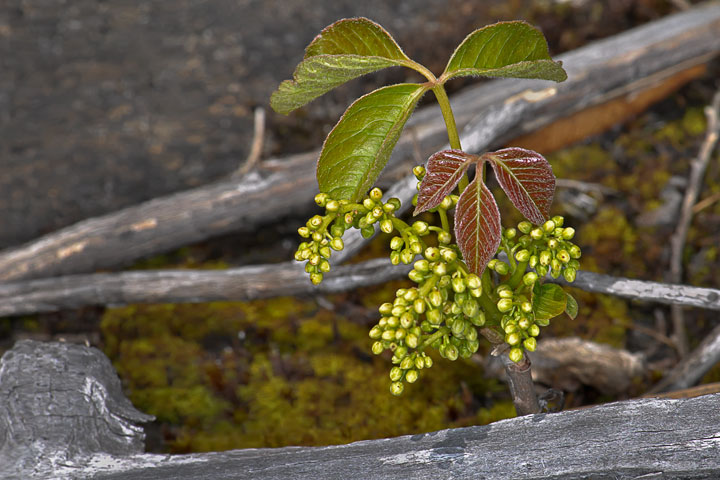 This is poison ivy (Toxicodendron radicans). Finding it was a bit of a surprise; I had never seen it around here before.
This is poison ivy (Toxicodendron radicans). Finding it was a bit of a surprise; I had never seen it around here before.
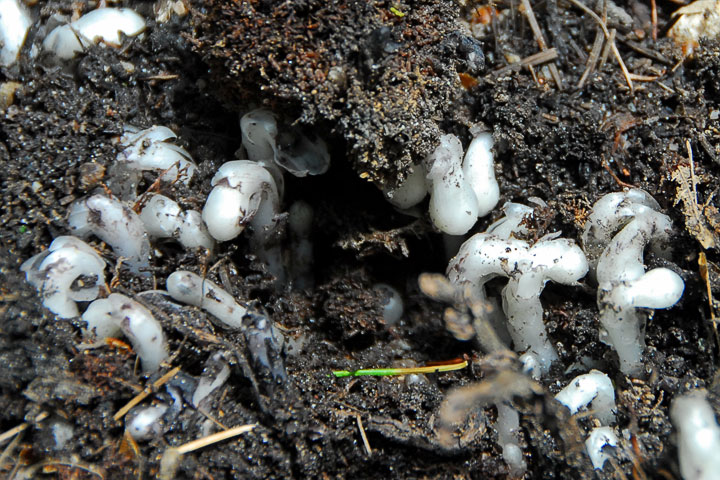 indian pipe (Monotropa uniflora) at Pilot Bay Park. The indian pipe lacks chlorophyll and so must extract its food from other plants. As it obtains nutrients from the roots of coniferous trees, it can be found in moist coniferous forests, usually at lower elevations.
indian pipe (Monotropa uniflora) at Pilot Bay Park. The indian pipe lacks chlorophyll and so must extract its food from other plants. As it obtains nutrients from the roots of coniferous trees, it can be found in moist coniferous forests, usually at lower elevations.
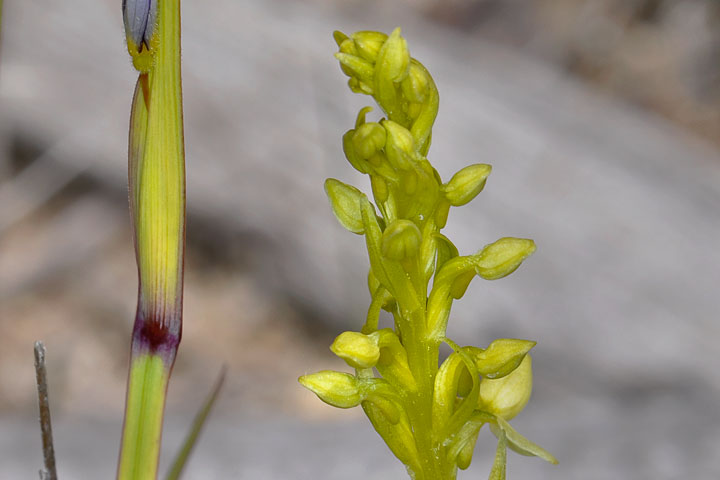 This looks like a yet–to–open white rein orchid (Platanthera dilitata)
This looks like a yet–to–open white rein orchid (Platanthera dilitata)
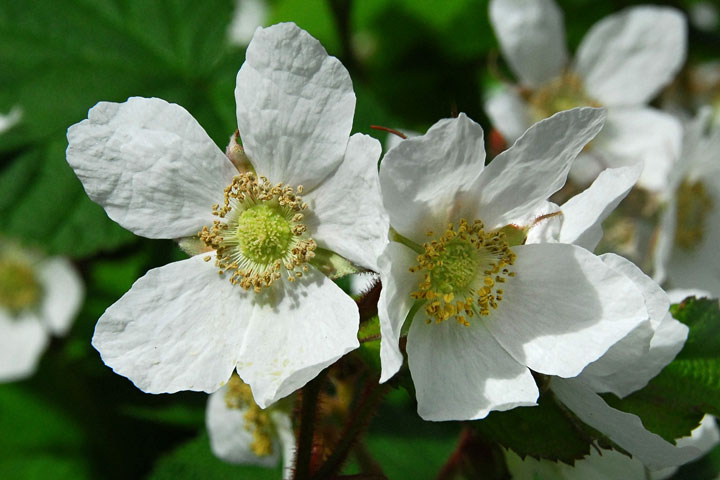 The thimbleberry (Rubus parviflorus) is seen everywhere. The large five–petaled flower is followed by a red (thimble–shaped) berry which are favoured by birds and jam makers. The broad leaves are soft (occasionally being pressed into service as toilet paper).
The thimbleberry (Rubus parviflorus) is seen everywhere. The large five–petaled flower is followed by a red (thimble–shaped) berry which are favoured by birds and jam makers. The broad leaves are soft (occasionally being pressed into service as toilet paper).
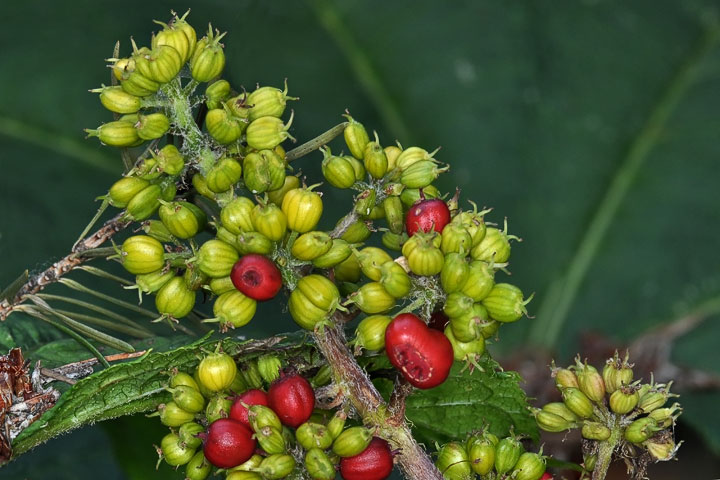 The devil’s club (Oplopanax horridus) has inconspicuous greenish–white flowers which get replaced with reddish berries. Well named, the plant is covered with brittle spines which can greatly irritate the skin (unlike the thimbleberry, these leaves would make unsatisfactory toilet paper). The plant is common to moist streambanks and forests in the lowland to subalpine zones.
The devil’s club (Oplopanax horridus) has inconspicuous greenish–white flowers which get replaced with reddish berries. Well named, the plant is covered with brittle spines which can greatly irritate the skin (unlike the thimbleberry, these leaves would make unsatisfactory toilet paper). The plant is common to moist streambanks and forests in the lowland to subalpine zones.
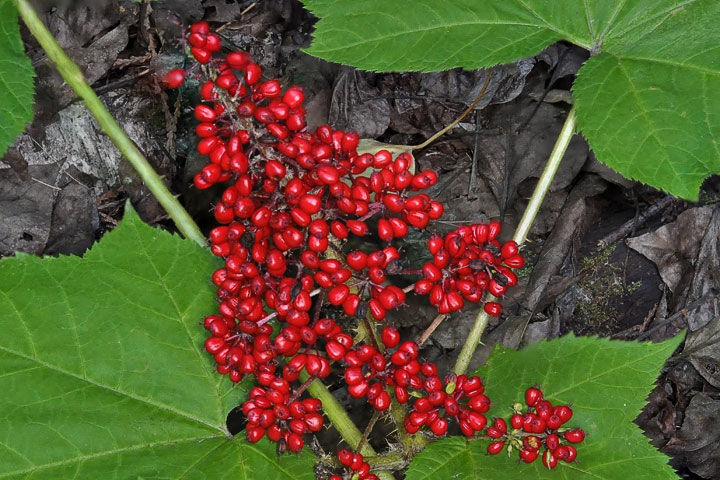 The devil’s club (Oplopanax horridus) has inconspicuous greenish–white flowers which get replaced with reddish berries. Well named, the plant is covered with brittle spines which can greatly irritate the skin (unlike the thimbleberry, these leaves would make unsatisfactory toilet paper). The plant is common to moist streambanks and forests in the lowland to subalpine zones.
The devil’s club (Oplopanax horridus) has inconspicuous greenish–white flowers which get replaced with reddish berries. Well named, the plant is covered with brittle spines which can greatly irritate the skin (unlike the thimbleberry, these leaves would make unsatisfactory toilet paper). The plant is common to moist streambanks and forests in the lowland to subalpine zones.
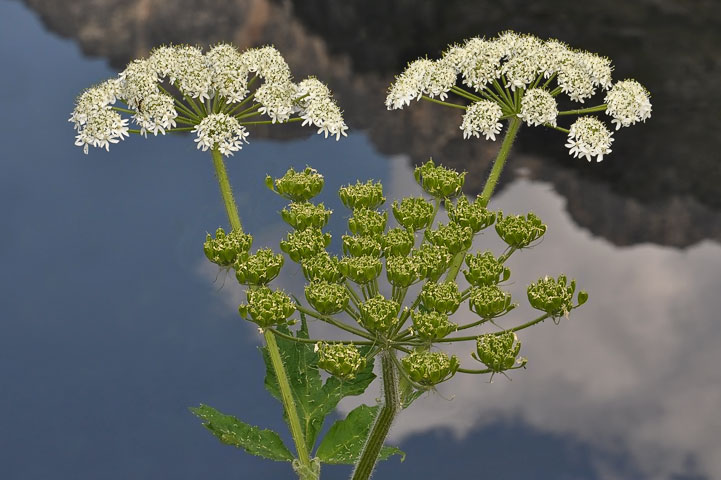 Cow parsnip (Heracleum maximum, or lanatum) at Gibson’s Lake (seen behind the plant). This woody perennial can grow to heights of over two meters.
Cow parsnip (Heracleum maximum, or lanatum) at Gibson’s Lake (seen behind the plant). This woody perennial can grow to heights of over two meters.
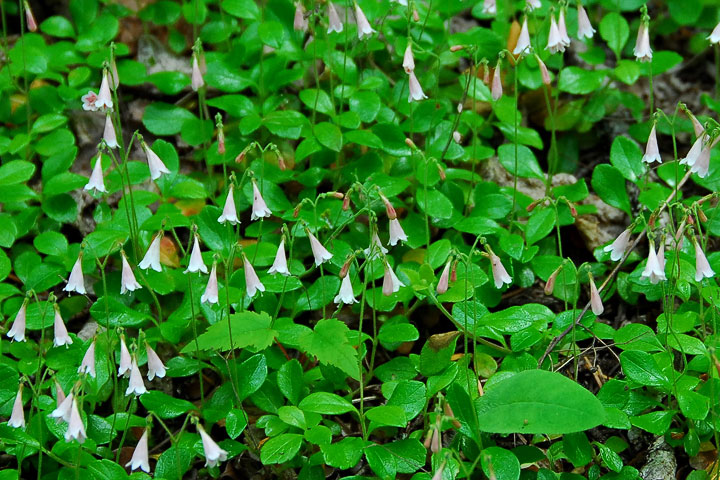 The twinflower (Linnaea borealis) can be seen in the shade of forest floor throughout the Province—indeed it is a circumpolar species.
The twinflower (Linnaea borealis) can be seen in the shade of forest floor throughout the Province—indeed it is a circumpolar species.
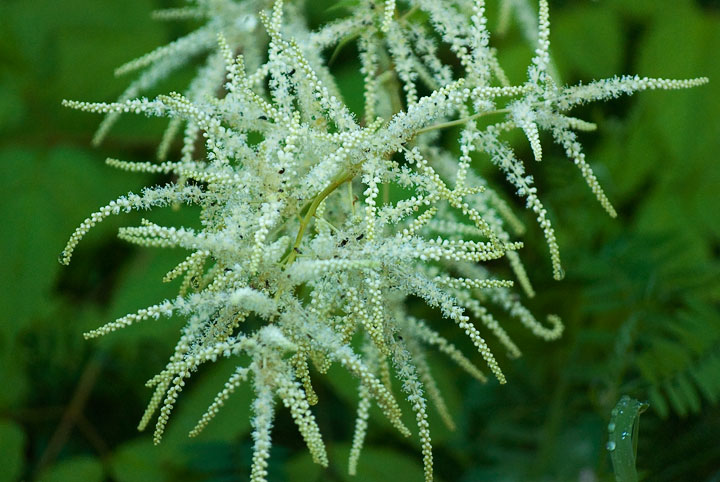 The goat’s beard (Aruncus dioicus).
The goat’s beard (Aruncus dioicus).  Nicole Tremblay
Nicole Tremblay
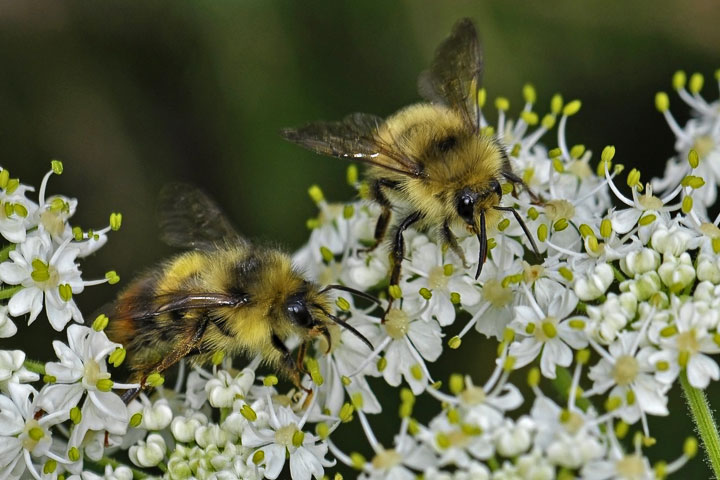 A close view of the cow parsnip being visited by two male bumble bees (Bombus mixtus).
A close view of the cow parsnip being visited by two male bumble bees (Bombus mixtus).
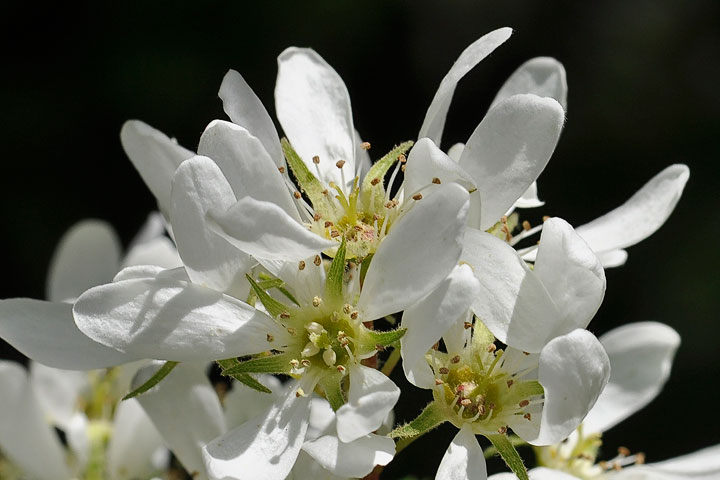 The saskatoon berry shrub (Amelanchier alnifolia) is common to the area, but the blooms are soon gone only to be replaced by the blue berries.
The saskatoon berry shrub (Amelanchier alnifolia) is common to the area, but the blooms are soon gone only to be replaced by the blue berries.
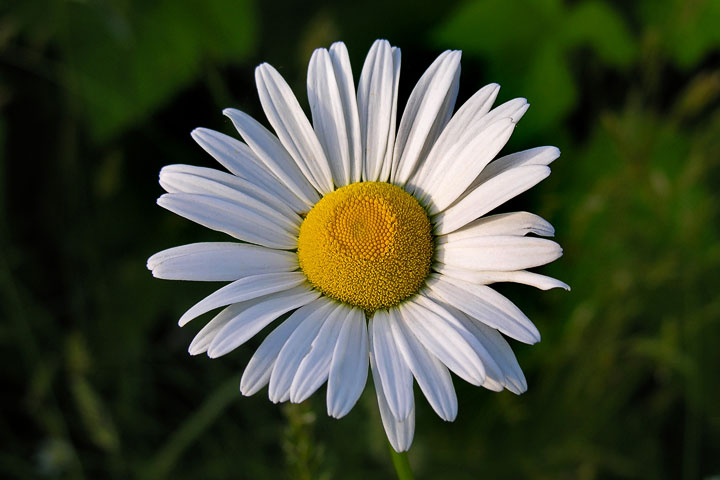 The oxeye daisy is an invasive species.
The oxeye daisy is an invasive species.
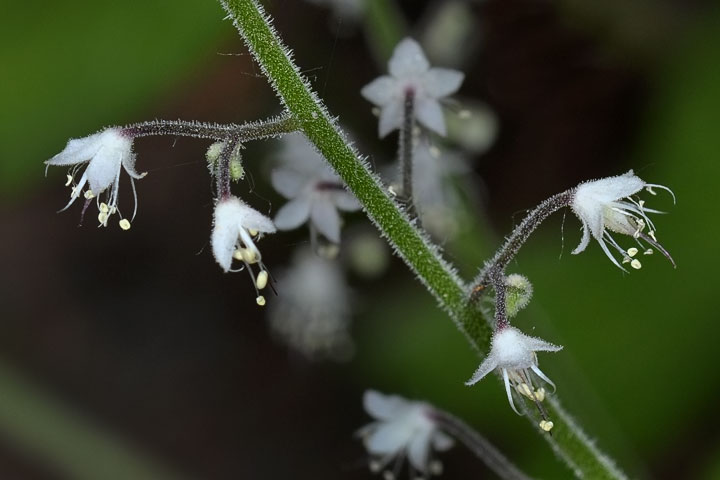 A closeup of the delicate blossoms of the foamflower (Tiarella trifoliata).
A closeup of the delicate blossoms of the foamflower (Tiarella trifoliata).
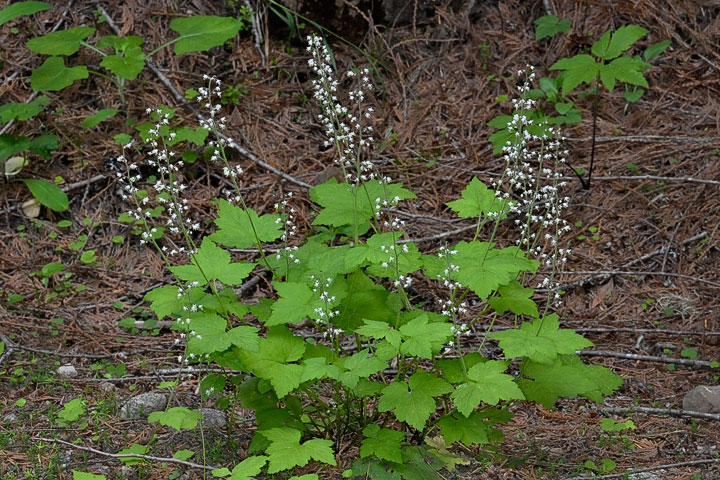 Towers of tiny flowers grow out of the leafy base of the foamflower (Tiarella trifoliata).
Towers of tiny flowers grow out of the leafy base of the foamflower (Tiarella trifoliata).
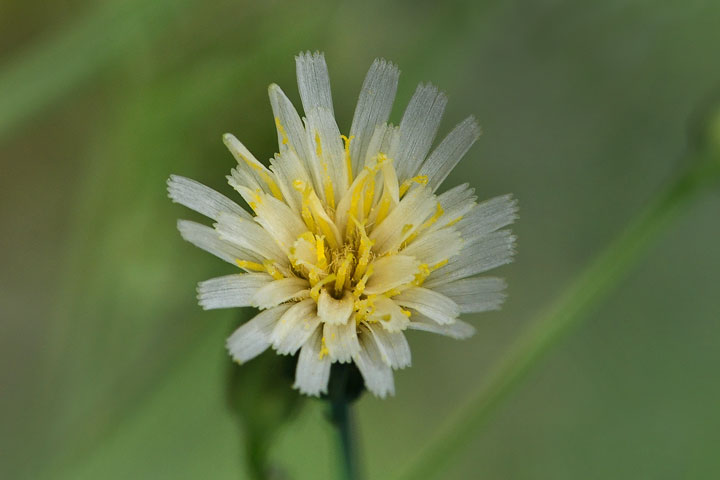 The white hawkweed (Hieracium albiflorum) is a native species, unlike its much castigated invasive cousins, the orange hawkweed and the yellow hawkweed. The hawkweed gained its name from a belief, dating to ancient times, that hawks ate it to improve eyesight.
The white hawkweed (Hieracium albiflorum) is a native species, unlike its much castigated invasive cousins, the orange hawkweed and the yellow hawkweed. The hawkweed gained its name from a belief, dating to ancient times, that hawks ate it to improve eyesight.
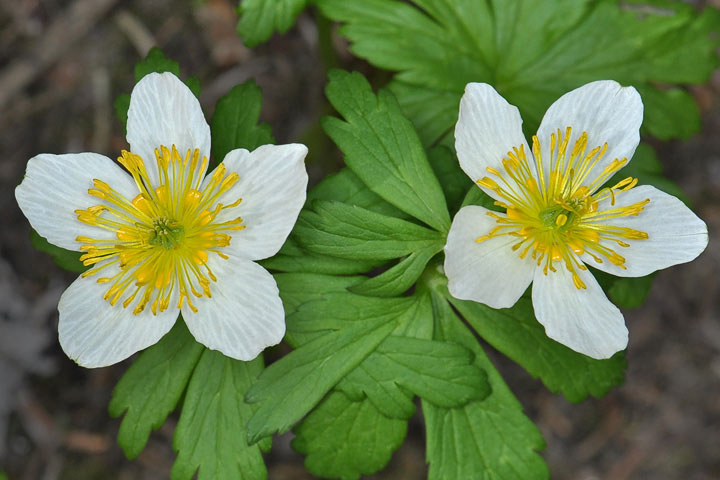 The alpine anemone (Anemone drummondii) is a striking flower, but in somewhat unexpected ways: it doesn’t have any petals—those white structures are sepals. Curiously, the number of sepals is variable from five to eight; these two flowers have five each.
The alpine anemone (Anemone drummondii) is a striking flower, but in somewhat unexpected ways: it doesn’t have any petals—those white structures are sepals. Curiously, the number of sepals is variable from five to eight; these two flowers have five each.
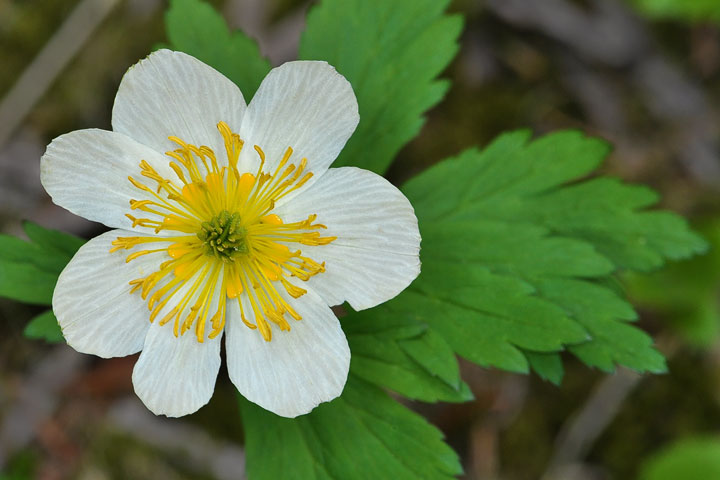 This alpine anemone (Anemone drummondii) shows seven petal–like sepals. These anemone were seen at Gibson’s Lake early in July.
This alpine anemone (Anemone drummondii) shows seven petal–like sepals. These anemone were seen at Gibson’s Lake early in July.
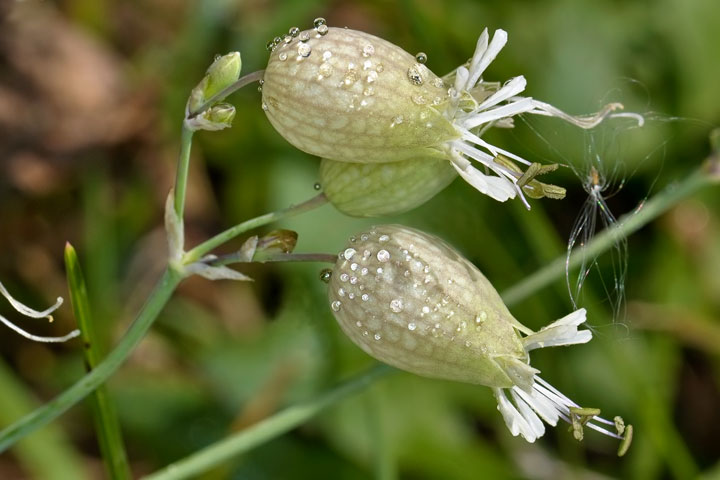 The bladder campion is an exotic species.
The bladder campion is an exotic species.
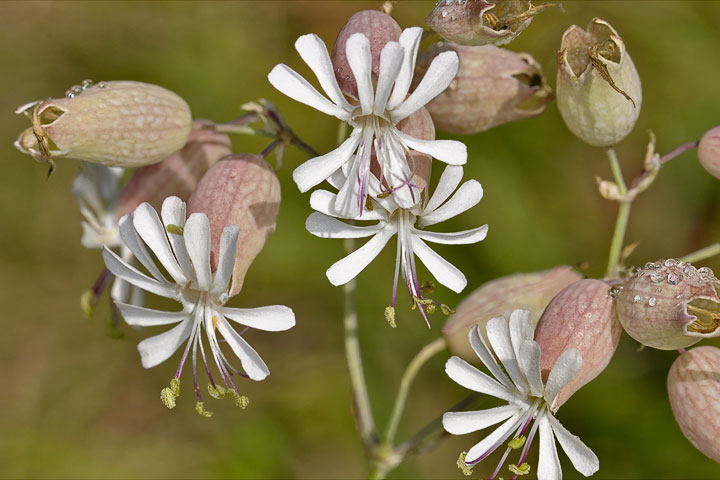 The bulbous calix of the bladder campion (Silene vulgaris) remains after the petals have fallen as can be seen with some of these flowers.
The bulbous calix of the bladder campion (Silene vulgaris) remains after the petals have fallen as can be seen with some of these flowers.
 The blossoms of the white sweetvetch (Hedysarum sulphurescens) are being visited by a female sweat bee (Lasioglossum sp.).
The blossoms of the white sweetvetch (Hedysarum sulphurescens) are being visited by a female sweat bee (Lasioglossum sp.).
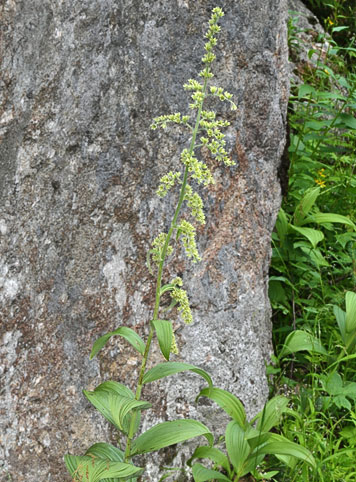 This tall member of the lily family, the indian hellebore (Veratrum viridei) is extremely toxic.
This tall member of the lily family, the indian hellebore (Veratrum viridei) is extremely toxic.
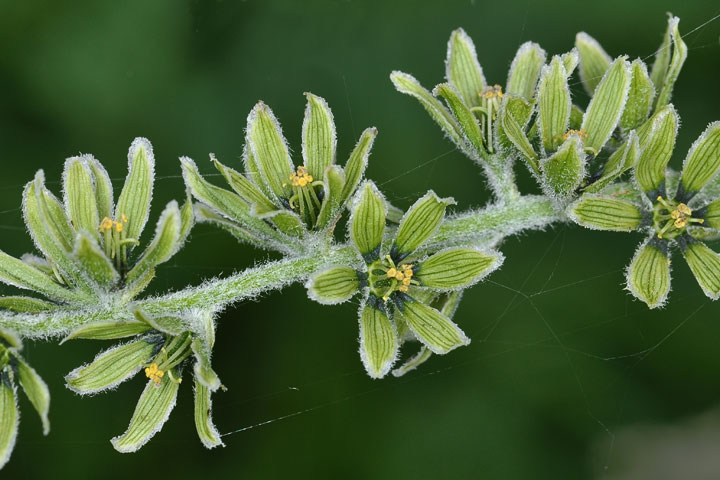 The flowers of the indian hellebore (Veratrum viridei) are small and green.
The flowers of the indian hellebore (Veratrum viridei) are small and green.
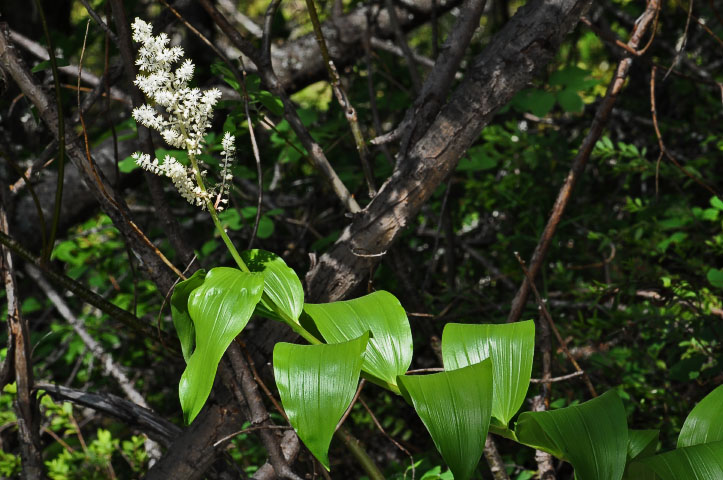 The false solomon’s seal (Maianthemum racemosum) is a woodland herbaceous perennial plant which grows from 50–90 cm tall, with alternate, oblong–lanceolate leaves.
The false solomon’s seal (Maianthemum racemosum) is a woodland herbaceous perennial plant which grows from 50–90 cm tall, with alternate, oblong–lanceolate leaves.
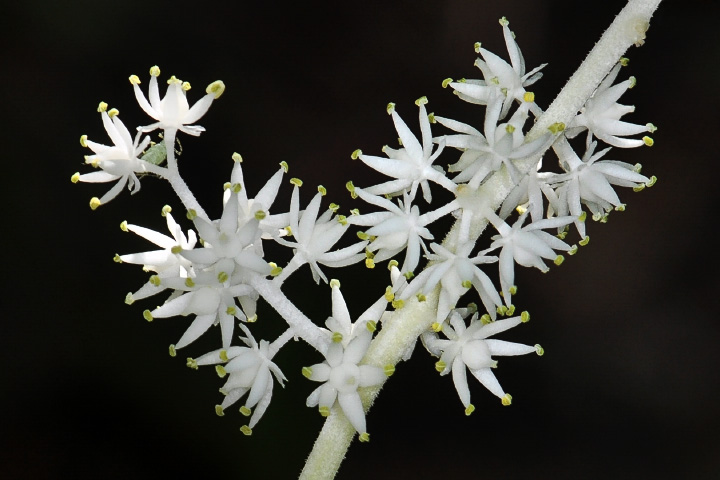 This is a detail of the panicle of the false solomon’s seal (Maianthemum racemosum).
This is a detail of the panicle of the false solomon’s seal (Maianthemum racemosum).
![]()